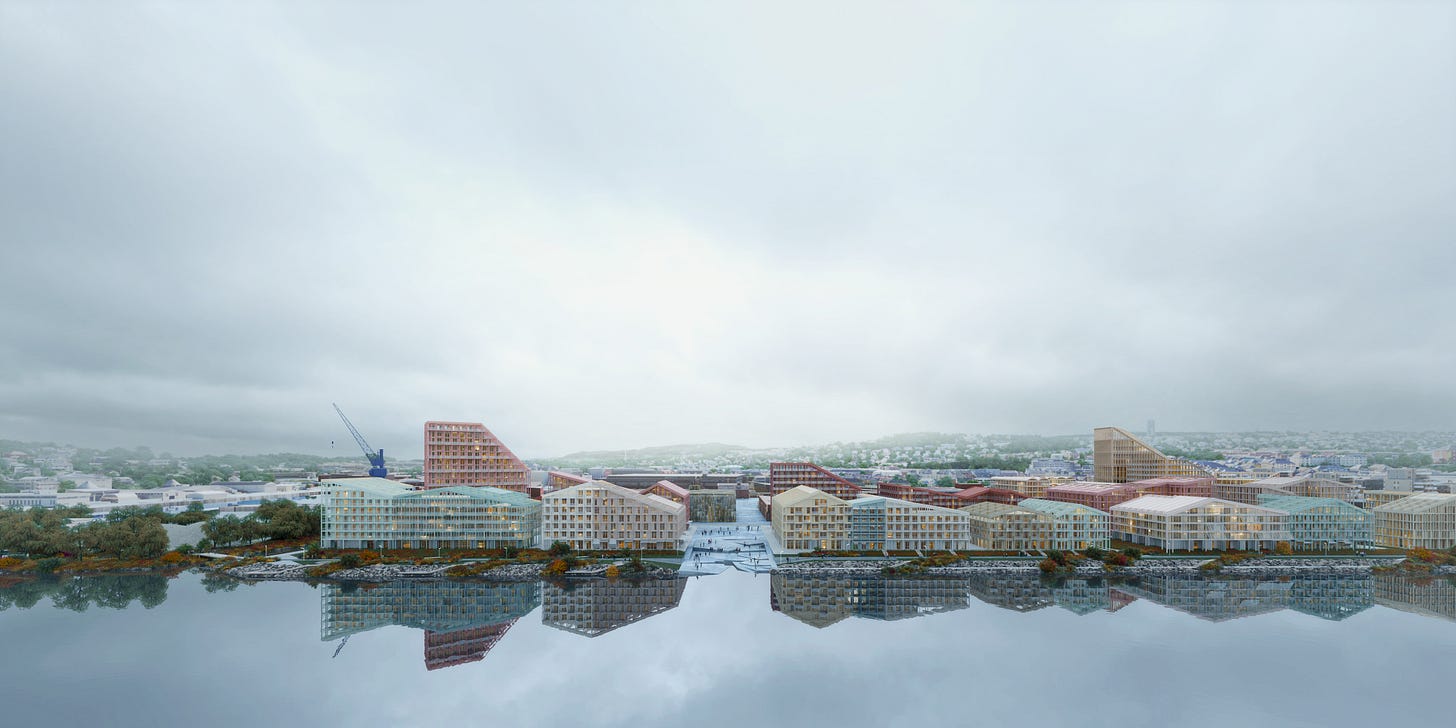Former harbor areas are some of the most precious land we have for urban expansions. Ideally located for integration as new neighborhoods in our growing cities and often placed in prime locations for sustainable living. Close to the city centers, but outside the noisy buzz. Close to infrastructure, but with no traffic passing through. And finally, close to exorbitant recreational qualities and lifestyle. Harbor transformations are in the front line of our communities and often develop into high end neighborhoods. But on the other hand, they are also the urban frontiers towards an uncertain future of sea level rise. They are the space in between, where city and sea meet, and where we need to demonstrate how we can build resilient and future proof neighborhoods.
Just recently, I was reading an old UNESCO research about urban biosphere reserves. In other words, the concept of planning green structures, reserving space for the un-built, zones for habitats and green areas in our urban environments. Reserving space for natural green areas is an integral part of any new zoning or urban planning document. However, the way UNESCO describes this as a reserve for biospheres could be further emphasized in our structural thinking when planning modern, healthy, green, sustainable, resilient and futureproof cities, with spatial qualities for all dimensions of life.
The blue urban biosphere
Being involved in several harbor transformations, we often deal with the dilemma of integrating nature in old industrial harbors. Manmade landfill, as grey and unnatural as it gets due to its former main purpose - logistics! Nature is rarely found in these places, with the exception of pioneer vegetation found in leftover spaces. Nature and open space for harbor communities are often conceived purely as the omnipresence of blue landscapes. Using our own masterplan for Nordhavn as a reference, the largescale landscape is placed at the very tip of the harbor, now undergoing construction and plantation to become a generous new coastal park for the entire city to enjoy. But in these early phases, the harbor edge is mostly dominated by hard-scapes.
In several of the ongoing plans we are involved in, a renewed focus on greening the harbor city is happening. Both in terms of working actively with rainwater and flooding, but also with a renewed view of the edge of the water as a possible space for more soft and natural landscapes. It also seems more and more relevant in the face of climate change as it reserves space at the intersection of land and sea for flexibility, resilience and the creation of new habitats for plants and animal life to take part in our harbor communities. All in all, an important strategy to create a harbor edge where all sorts of life can flourish, and not be privatized by housing or other developments.
A Nordic ‘Florida’ coast
We have recently been invited far north to work on a new masterplan for Nyhavna in Trondheim. A site with a western orientation and a harbor edge dominated by a stone settlement filled with pioneer vegetation and life between sea and land. A perfect opportunity to work with a more natural edge design, a landscape at the intersection, for people, animals, plants and life in general to claim its space. The possibility to create a landscape edge, instead of the usual harbor promenade, sparked new ideas on shaping a different space inspired by the fjord landscape of the region. A new blue urban biosphere, a reserve between city and sea, a place for flexibility and negotiation between the urban and the natural.
In our initial research we found that the harbor edge had once been super natural, and labelled ‘the Florida coast’ of Trondheim. The idea was to somehow link past and future in a resilient poetry, framing an innovative element for this new blue community to engage with the very nature of the site.
Make the blue city a public attraction
Harbor fronts are extremely valuable spaces for urban transformation. They often develop as high-end housing areas due to their lucrative position. This makes the public space of our harbor fronts fragile in the face of unintended privatization of public space. Harbor fronts should be accessible for everyone, not limited to the lucky few. At Nordhavn in Copenhagen, one of the main parameters of the development has been that of reserving all promenades as fully public. There is no privately claimed waterfront, which has created a strong harbor community and super popular urban district within just a few years. Another eventful strategy has been to build all urban spaces and promenades before the new housing, office spaces etc., making the whole development area a spectacle for everyone to attend already during the construction period.
Waterfronts should be innovative public spaces, spacious and flexible for the uncertainties of the future. Each harbor deserves its own identity, building on the local character of the landscape and urban context. Much more than a promenade, they can become urban biospheres for all sorts of life to enjoy the horizon of the blue city!











